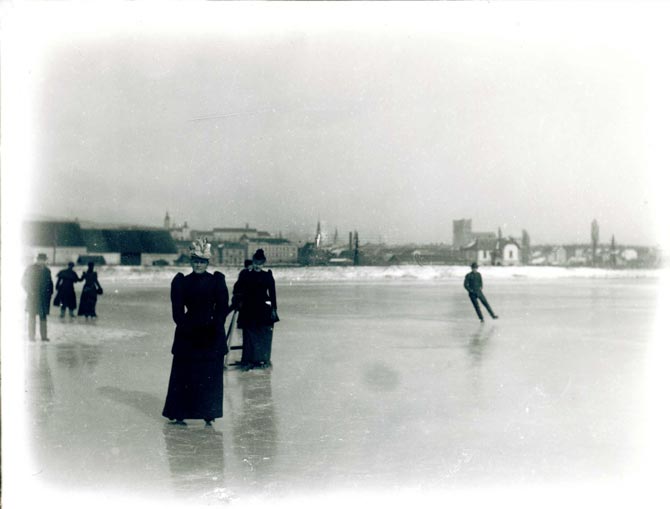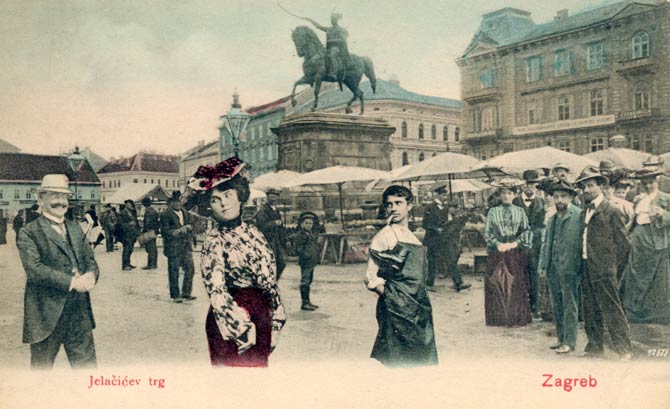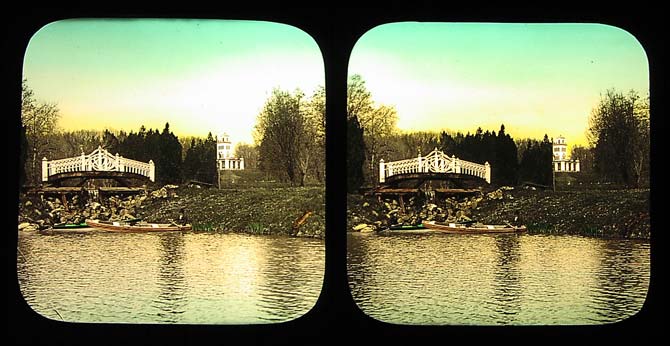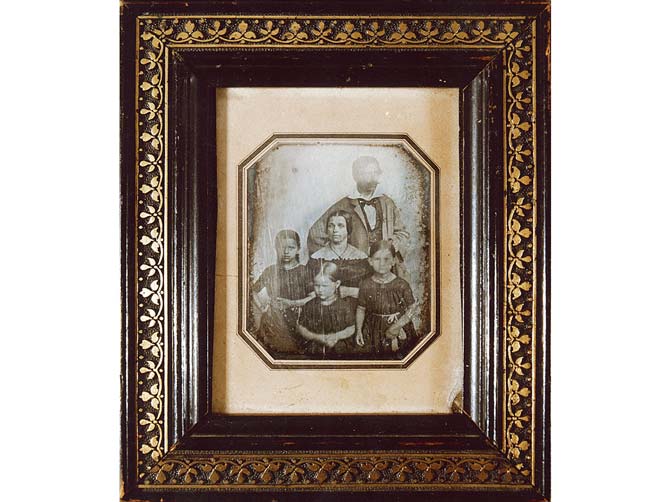Collection The Collection of Photographs, Photographic Equipment and Postcards
The Historical Origins of the Collection
The Collection of Photographs, Photograpic Equipment and Postcards was founded immediately after the founding of the Museum itself, in 1907, when the Museum obtained its first stereoscopic, dioramic positives and negatives, photographs and postcards. Studio, amateur and tradesmen’s photographs are dominant.
A second stimulus, resulting in the expansions of the collection, was given by the Cultural and Historical Exhibition of the City of Zagreb, in 1925, when the Museum was given significant photographic albums by Ludwig Schwoiser, Ivan Standl, Hermann Fickert, Ivan Varga, Otto Dasch, Hinko Krapek, I. Dryjak, Rudolf Mosinger and Lavoslav Breyer.
The Collection took on new dimensions between 1928 and 1943 during the time Gjuro Szabo was director of the museum, with the accession of new work and documentary photographs.
In 1953 the Museum set up its own photographic section (run by Vladimir Guteša from 1953 to 1961, by Josip Vranić from 1961 to 2000, and from 2000 by Miljenko Gregl), which gathers and makes photographic documents about old Zagreb and its current life and development, as well as about the events in and around the Museum. The historical collection has gradually developed into an up-to-date and contemporary collection, with current, journalistic and art photography becoming increasingly dominant.
During time, the Collection has gradually been enriched with bequests, gifts and purchases.
The Thematic Organisation of the Collection: The City of Zagreb and its Environs
Today the Collection of Photographs, Photographic Equipment and Postcards guards the visual memory of the city of Zagreb. Photographs are categorised according to the following thematic units:
- streets and squares
- parks and lakes
- panoramic views of the city
- secular and sacral buildings
- public monuments, graffiti
- personalities (individual and group portraits of all areas of social, political and cultural life) and Zagreb civic associations (humanitarian, music, amusement, etc.)
- culture and media (museums, galleries, theaters, cinemas, television)
- education and science
- health care
- sport
- economy
- industrial facilities (factories, slaughterhouses, foundries, breweries, mills, printing shops)
- crafts and trades (fairgrounds and markets, department stores, shop windows)
- catering and hospitality facilities (bars, restaurants, cafés, hotels)
- banking
- public city services and utility services
- traffic
- post
- fire fighting
- constabulary
- water mains and sewerage
- cemeteries and funeral services
- life of the city
- events: economic events (Zagreb Fair), art exhibitions, carnivals, processions, feasts, celebrations, anniversaries, conferences, strikes, accidents, disasters, funerals, political events (meetings, visits of statesmen)
- army
- Medvednica
- Zagreb surroundings.

Julius Hühn, The Klaić Family, photograph, 11 x 15 cm, ca 1861, MGZ fot. 15818

Gjuro Varga, Jelačić Square before the 1880 Earthquake, tinted photograph, 16 x 23.5 cm, ca 1880, MGZ fot. 5086

A. Mühlbauer, Zagreb Skating Rink, photograph, 18 x 24 cm, January 14, 1893, MGZ fot. 15831

Jelačić Square, postcard, MGZ Ra-43-II-10501

Stereoscope (pantoscope), Austria, ca 1900, MGZ 8302 Stereoscope, Austria, ca 1910, MGZ 8303

Josip Kokalj, Maksimir, stereoscopic glass slide, 8.2 x 17 cm, ca 1903, MGZ fot. 56-IV-d-22
Photographs in the Permanent Display of the ZCM
Topic 33, From the Photographic Studio, photographs of the most important names of Zagreb photography are displayed in an easy-view wooden box. Apart from that, the display rooms have 286 photographs (originals, copies, enlargements), 70 postcards and 3 photographic albums, which complement the material presented. Both home and foreign photographers are represented.

Daguerreotype from the family of Antun Vakanović, 11 x 8.5 cm, ca 1845,
MGZ fot. 14373-II-9471a-III-1776
The Extent of the Collection
The stock of registered photographs (photographic calling cards, daguerreotypes, stereoscopic photographs), freestanding or framed, and photographic albums, today includes more than 25,000 items. The number of negatives, from Leica format to Size VIII, approaches 25,000. There are some 2,000 slides, from Leica format to 8.5 x 8.5 and 9 x 12. There are ca 4,000 postcards, black and white and colour, of local and foreign origin. (Slavko Šterk)
Collection manager: MSc. Dubravka Zaninović Stančec, senior curator and documentarist

